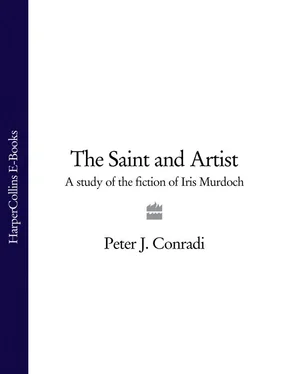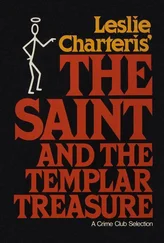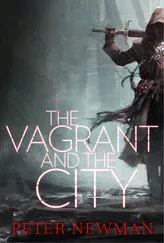Truth, of course, has had a bad press recently, and thus the question of stylisation has a way of returning. One reviewer recorded how his feeling on opening a Murdoch novel – ‘But surely human beings are not like this’ – can be swiftly followed by the feeling – ‘Perhaps this is just what human beings are in fact like, and it is precisely our delusion to imagine that we are not.’ 5 One source of positive pleasure in the bizarrerie offered by her plots comes from our sense that, as Murdoch has often averred, people are secretly much odder, less rational, more often powered by obsession and passion than they outwardly pretend or know, and that the novelist is revealing such secrets in creating her (imaginary) people. Some accounts of Bloomsbury – for example Angelica Garnett’s Deceived with Kindness – make most Murdoch plots look models of understatement. ‘Murdochian’ has justly joined ‘Dickensian’ and ‘Swiftian’ as a way of pointing to certain aspects of the world. I think her characters are recognisable. These vain bookish civil servants, morally squeamish men whose sheer egoism is driving them mad, emotionally greedy women, precocious adolescents, isolated and awkward good characters, all involved in the great, lonely hunt for love and consolation and power: it is not a bad image of the world. It has universality too.
There are related points to be made about contrivance. Her best work is quiveringly real/unreal in its texture. What can be perplexing is not that she fails to convince, but that she can describe with an extraordinary hallucinatory validating detail and power the most ‘unlikely’ situations, so that, before you have time to decide whether or not you believe in them, you find yourself forced to imagine them. Her ingenious style of realism, in combining fantasy with a meticulous naturalistic rendering of detail, shares something with surrealism. It can drive a wedge between reason and imagination, so that we concur imaginatively, against reason’s good advice; reason is dulled in something like awe at her sheer aesthetic nerve and inventiveness. In Chapter 5 I discuss how the limits to rationalism become for her a great theme. Her use of contrivance seems to relate to this, a deliberate and shameless affront, ‘unbelievable’ in a way that mimics and parodies the frequently unbelievable quality of life too. Unreality, in other words, can be a potent aesthetic device. The task of classifying, as her work often asserts, can perhaps never be more than a (serious) game; but visionary or ‘magical’ realism seems to get closer than most descriptive terms to the special and disturbing pleasure her work can afford. The question of artifice has too often been divorced from the question of pleasure.
She can create mystery and magic. In the least of her work there is something alive and interesting, an atmosphere which haunts and stays with you. The Dorset seascape of The Nice and the Good, the fogbound rectory in The Time of the Angels, the various different Londons of A Severed Head, or A Fairly Honourable Defeat – these are real imaginative creations. The creation of a strong ‘atmosphere’ can be at odds with the creation of character, and I think critics can be too puritan here. Even Shakespeare and Tolstoy do not always create ‘memorable’ characters. Like any other writer’s, Murdoch’s characters can sometimes be memorable, sometimes merely believable, sometimes interesting without being persuasive, sometimes ‘far too individual to remember’. 6 In the most idea-bound of her romances we have persons and not merely personifications. A disservice is done by critics awed by the cold prestige of ‘philosophy’, and mindful that Iris Murdoch is a philosopher as well as a novelist, who treat the novels as though their inhabitants must therefore be no more than symposiasts at a disputation. The books are full of ideas, of course, but are also about life, feed off life, feed back into life.
Murdoch clearly understood a great deal about people, with a quality of understanding I can best describe as ‘animal intelligence’, a Keatsian ability to encounter the sensuousness of the activity of thinking, in all its immediacy. She was interested in power, a subject largely ignored by critics. ‘No question can be more important than “Who is the boss?”’, says Julius in A Fairly Honourable Defeat. The question ‘Who is the boss?’ links in her books, as in life, with sex and with spirit. There is a large other range of mixed emotion she is adept at evoking, especially, of course, love, her subject par excellence. If she is the Gilbert White of the sensations and the emotions, she is also love’s natural historian.
She can appear to be playing a sophisticated game with the reader, and the critic should beware of complaining that she is simply more intelligent than he is. If you enjoy her, her intelligence is part of what you are enjoying. I try to explain in Chapter 5 how the frustration of the reader’s natural desire to make the world of the book transparent is a task Murdoch takes seriously. She is, I think, in Isaiah Berlin’s famous dichotomy, much more of a fox than a hedgehog – one who knows many things before she knows one. Knowing many things is in a sense her premise for knowing one. Despite the fact that she declared that she inclined, temperamentally, to monism ( SG 50), she sees the world’s variousness and multiplicity as art’s opportunity, as well as its foe.
Her social range deserves comment. Often the novels will concern a central ‘court’ of relatives and friends, some of whom will have met at university, and whose older womenfolk have sacrificed careers for those of their husbands. Such inbred courts feed off Shakespeare, as she often acknowledged, as well as off life. The British professional classes often lead such inbred coterie lives, and she will be remembered, I am sure, partly as a chronicler of her age’s chattering classes. ‘One can only write well about what one thoroughly understands,’ she has noted (Bradbury, 1976), pointing out that any account of ‘intelligent people who are interested in their society’ will carry some general interest. One might gloss this by saying that a close account of those assumed by society to be ‘the Great and the Good’ is likely – as in the toughly satirical A Severed Head – to tell us something important about society itself, even though satire as such in the other novels is muted into a more general irony. Moreover, contrary to the superficial view that her social range merely shrank, a close look shows that it polarised. There were always in her work deracinated intellectuals of various backgrounds, ambitious girls on the make (Madge in Under the Net, Miss Casement in The Flight from the Enchanter) , working-class recruits to the intelligentsia, delinquents, bohemians and refugees. Latterly there was a polarisation of the cast into the possessing and the dispossessed, so that in Henry and Cato the two ends of Ladbroke Grove, one wealthy, the other derelict, act as an image of social contrast and inequality. In A Word Child the orphan and bastard Hilary Burde’s seedy life contrasts with that of his rival Gunnar Jopling’s ‘casually gorgeous’ milieu. And in Nuns and Soldiers Tim Reede moves from the class that raids other people’s fridges to the class that owns the wellsupplied fridge. It is certainly true that she animated well those characters who have had some sort of higher education. This is not quite the same as claiming she could deal only with the bourgeoisie. To put the matter another way, she accurately reflects one of the ways in which, under the Welfare State, Britain’s class structure tended to alter. Before the Second World War the inheritance of privilege did not necessarily involve attending university, though it did depend on attending public school. Since the war, whether or not you received higher education became, for some decades, important in a novel way. As Murdoch noted in 1959:
Читать дальше












